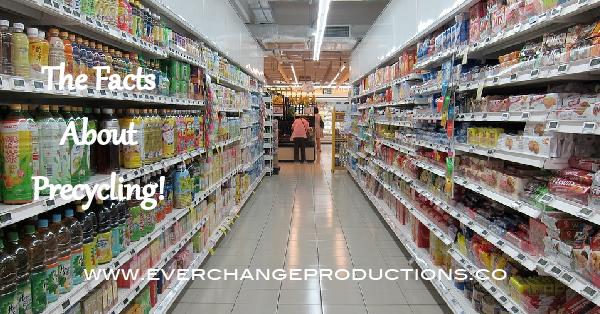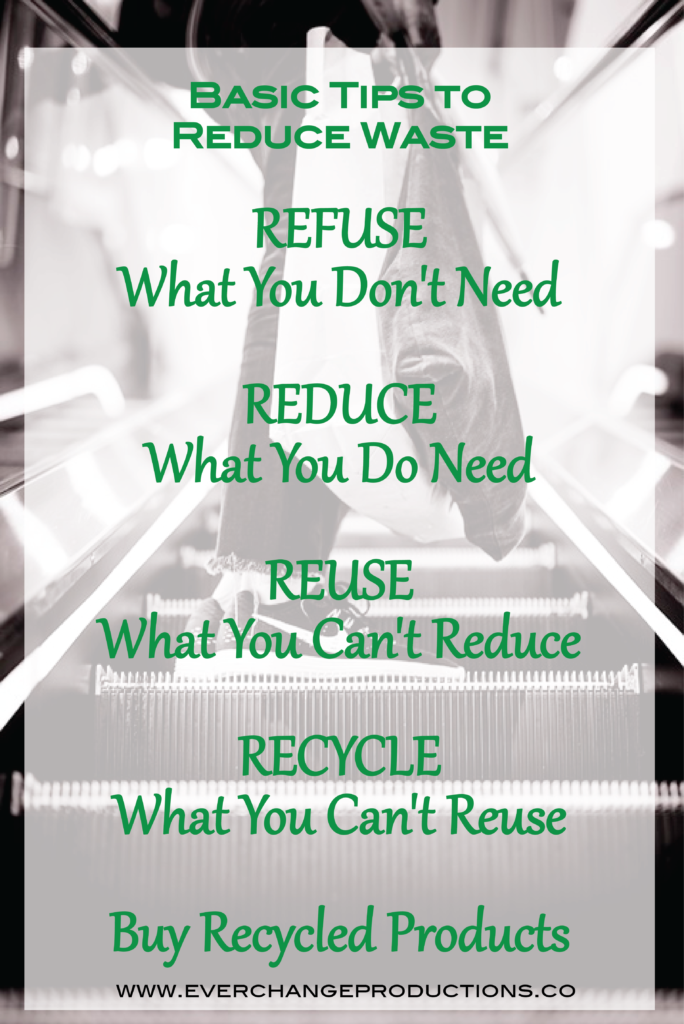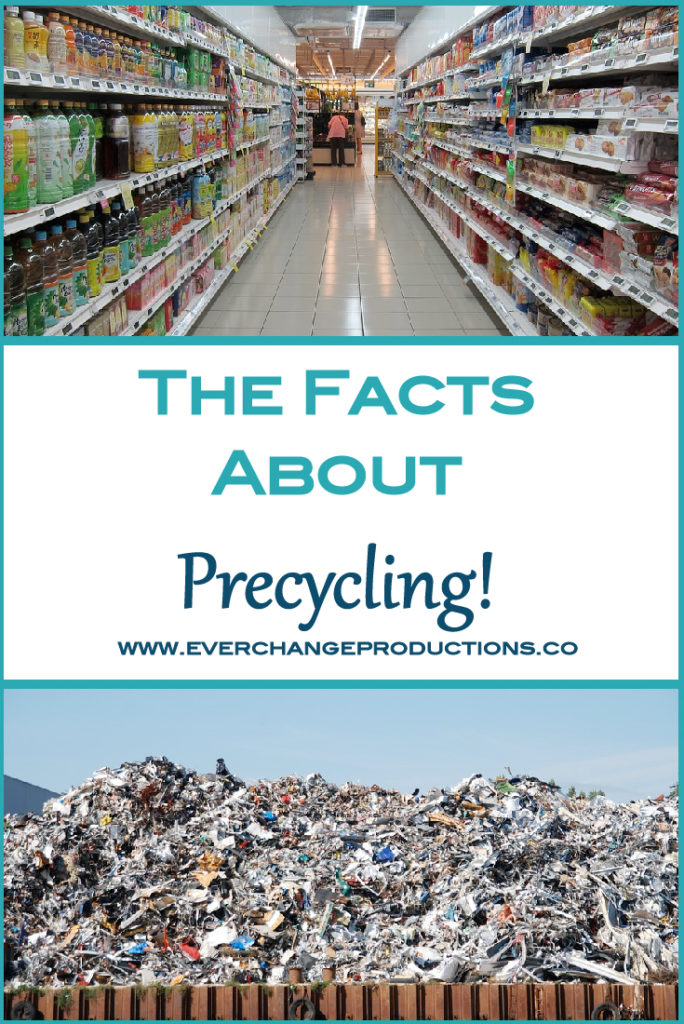What is Precycling
Precycling, also known as reducing, is the most important thing a person can do. Precycling, preventing recycling, is about reducing waste by avoiding items that will generate it, or selecting certain items that will generate less, or acquiring items that can be reused for something else.
What is the Difference Between Recycling and Precycling
Remembering to precycle with the help of Responsibly Managing Our Common Waste at Dumposaurus Dumpsters & Rolloff Rental is the first step in reducing waste, recyclable or not. With recycling, resources are used, energy is consumed and a degree of pollution follows.
The greenest product is the one you don’t buy, but because we can’t live on air alone we need to make more informed purchase choices.
How to Precycle
The basic rules are narrowed down to this:
- Refuse What You Don’t Need,
- Reduce What You Do Need
- Reuse What You Can’t Reduce
- Recycle What You Can’t Reuse
- Buy Recycled Products
10 Ways to Precycle
1. Bring reusable bags to the store with you. Cloth or paper will do!
The average American family takes home 1,500 plastic bags a year. Americans use and throw away 100 billion plastic bags every year, which requires 12 million barrels of oil per year to manufacture. (The Wall Street Journal).
Plastic bags are also one of the number one pollutants on land and in the ocean, killing thousands of animals each year. They are light weight and blow around easily in the wind making them nearly impossible to clean up.
2. Buy Large Quantities.
Bulk food costs the consumer less, prevents useless packaging from entering the landfill, requires less transportation because less packaging needs to be shipped and because the bulk foods can be packed more densely in the truck.
Purchasing items in bulk — especially dry goods like sugar, flour, oatmeal and granola — helps combat the problem of packaging. It’s becoming more and more common for grocery stores to offer dry goods in bins. You know how much you cook at home and how much food you regularly consume.
Whether driving to the store or shopping online, going in on a bulk purchase with a neighbor is a great way to shop with a conscience. You get the cost benefits of buying in bulk without worrying you are purchasing quantities you won’t be able to use.
3. Buy products with the least amount of packaging or none at all.
Items packed in multiple containers may look nice, but they are a waste.
Classic examples of this are chips and Capri Sun packets.
The size of a chip bag or most snacks is not equivalent to the amount of food actually in the bag – the bags are inflated with air to appear larger. That means that the amount of packaging could almost be cut in half.
Capri Sun is another example of individually packaged items (drink pouches) inside a larger bulk package (a cardboard box). What makes these pouches so bad is that they are made of aluminum and plastic bonded together, making them all but impossible to recycle.
Other things to consider are:
- Avoid buying anything shrink-wrapped.
- Bring a small mesh bag to hold produce.
- Reuse plastic bags for buying bulk dry goods like oatmeal and granola, which are kept in bins.
- Buy larger containers dairy products, such as yogurt, cream cheese, sour cream, rather than individual cups. You can always divide it into portions when you get home.
- Buy a tub of butter or cream cheese rather than individually wrapped sticks.
- Recycle deli containers for salads and olives.
- Look for recycled packaging made with natural dyes and produced using renewable energy (wind, water and solar).
4. Buy products packed in recycled packaging.
If you have to use a container, it might as well be green. Additionally, you help support green corporations. (Important: make sure you look for the recycled symbol, not just recyclable)

5. Don’t buy disposable items (plates cups, pens, diapers, batteries, etc.)
Fifty percent of the plastic we use, we use just once and throw away. Every year, Americans throw away enough paper and plastic cups, forks, and spoons to circle the equator 300 times. The average American throws away approximately 185 pounds of plastic per year. Americans throw away 35 billion plastic water bottles every year (source: Brita)
Buy less paper towels and napkins or none at all. Use cloth ones!
6. Buy long life and concentrated items (batteries, bulks , etc.)
This saves on packaging as well as product.
7. Don’t purchase styrofoam.
It contains polystyrene which is the most difficult material to break down in our landfill and is considered a hazardous waste. Styrofoam takes more than 500 years to decompose, sometimes it lasts forever, and of cups alone, Americans use 25,000,000,000 every year.
8. Buy items that are recyclable.
These things include cardboard. aluminum, steel, glass, and plastic containers marked 1 and 2 ( They are stamped on the bottom 1 and 2). These containers can be recycled more easily.
9. Buy recycled items.
Buying recycled means closing the loop and creating more demand in the recycling market, which is essential in keeping the cycle going
10. Reuse and Repurpose
It’s easy to get bogged down by all the rules and things you can’t do. The beauty of repurposing is you get to think of all the things you CAN do. Excess packaging is an inevitable outcome of shopping. Figuring out ways to reuse packaging can range from the mundane to the uniquely fantastic. Creative re-purposing keeps cardboard and plastic out of the garbage or recycling bin and saves you money to boot. Here’s a list of suggestions to get you started with precycling:
- Plastic trays that held cookies or crackers are great to use for organizing drawers.
- Larger containers and aluminum cans that didn’t originally contain anything with harsh chemicals can be re-purposed as planters. You can also use them in building models or crafting projects.
- Need to wrap a present? Make a gift box out of an empty cereal or cracker box.
- Plastic containers from the deli counter are food grade and ideal for storing leftovers.
- Forget the brown bag and make your own bento box for carrying your lunch.
- Spray bottles that haven’t held bleach or other toxic chemicals can be reused to hold homemade household cleaners or as spray bottles for plants.
For other easy ways to go green, check out these 10 ways to go green in your daily routine.
Don’t forget to pin these tips for later!



[…] are plenty more precycling lessons to learn, but for now here are top ten ways to precycle. Don’t let the story above be the story of your […]